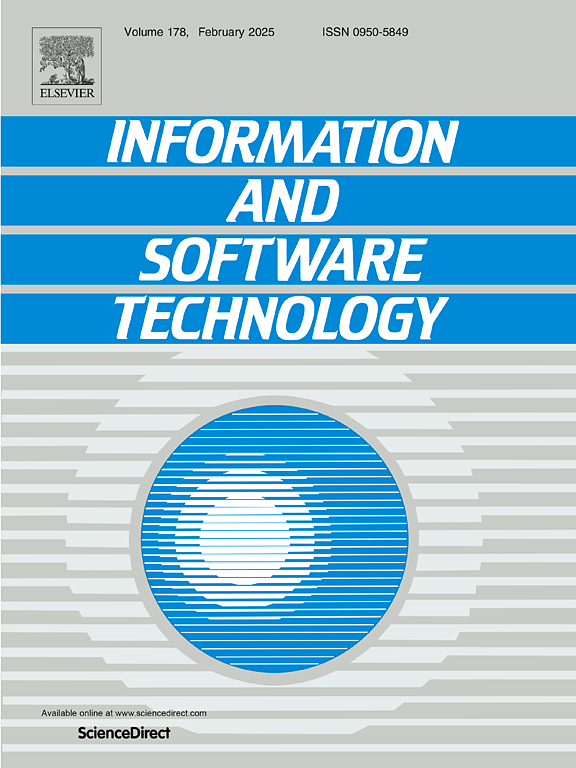Validation of information architecture: Cross-methodological comparison of tree testing variants and prototype user testing
IF 3.8
2区 计算机科学
Q2 COMPUTER SCIENCE, INFORMATION SYSTEMS
引用次数: 0
Abstract
Context:
Tree testing is an established user testing method applied by software professionals to validate that an information architecture is logically navigable by users. We identify a methodological gap caused by previously unexamined non-uniformity between tree testing methods and software.
Objective:
To reveal the role of the user interface representations in tree testing, this research compares the results of 3 commonly-used tree testing variants. To assess how indicative they are of the user’s interaction with an information architecture implemented in an actual user interface, and to issue methodological recommendations, comparison with varied high-fidelity prototypes was performed.
Methods:
Two between-subject studies were conducted to obtain a new dataset of users navigating an information architecture in tree testing and in interactive user interface prototypes. Data from 180 participants and 1800 task completions between 6 experimental conditions—3 tree testing and 3 prototype user interface variants—was evaluated quantitatively and qualitatively.
Results:
Significant differences were found between results yielded by different tree testing method variants, and in how well they approximate user navigation in the same information architecture in high-fidelity prototypes. Implications for selection of the tree testing variant are proposed in the context of evaluated information architecture, with plausible broader applicability for tree testing methodology. Evidence supports the tree testing variant with highest visibility of previous navigation choices and direct controls over their reversal as the most accurate.
Conclusion:
Presented findings can contribute to the design of software information architecture based on more accurate early validation, owing to tree testing that simulates less artificial user behavior more reflective of the user’s navigation in the eventual user interface. We hope this will further the discussion and research leading to more holistic tree testing methodologies in the future.
求助全文
约1分钟内获得全文
求助全文
来源期刊

Information and Software Technology
工程技术-计算机:软件工程
CiteScore
9.10
自引率
7.70%
发文量
164
审稿时长
9.6 weeks
期刊介绍:
Information and Software Technology is the international archival journal focusing on research and experience that contributes to the improvement of software development practices. The journal''s scope includes methods and techniques to better engineer software and manage its development. Articles submitted for review should have a clear component of software engineering or address ways to improve the engineering and management of software development. Areas covered by the journal include:
• Software management, quality and metrics,
• Software processes,
• Software architecture, modelling, specification, design and programming
• Functional and non-functional software requirements
• Software testing and verification & validation
• Empirical studies of all aspects of engineering and managing software development
Short Communications is a new section dedicated to short papers addressing new ideas, controversial opinions, "Negative" results and much more. Read the Guide for authors for more information.
The journal encourages and welcomes submissions of systematic literature studies (reviews and maps) within the scope of the journal. Information and Software Technology is the premiere outlet for systematic literature studies in software engineering.
 求助内容:
求助内容: 应助结果提醒方式:
应助结果提醒方式:


